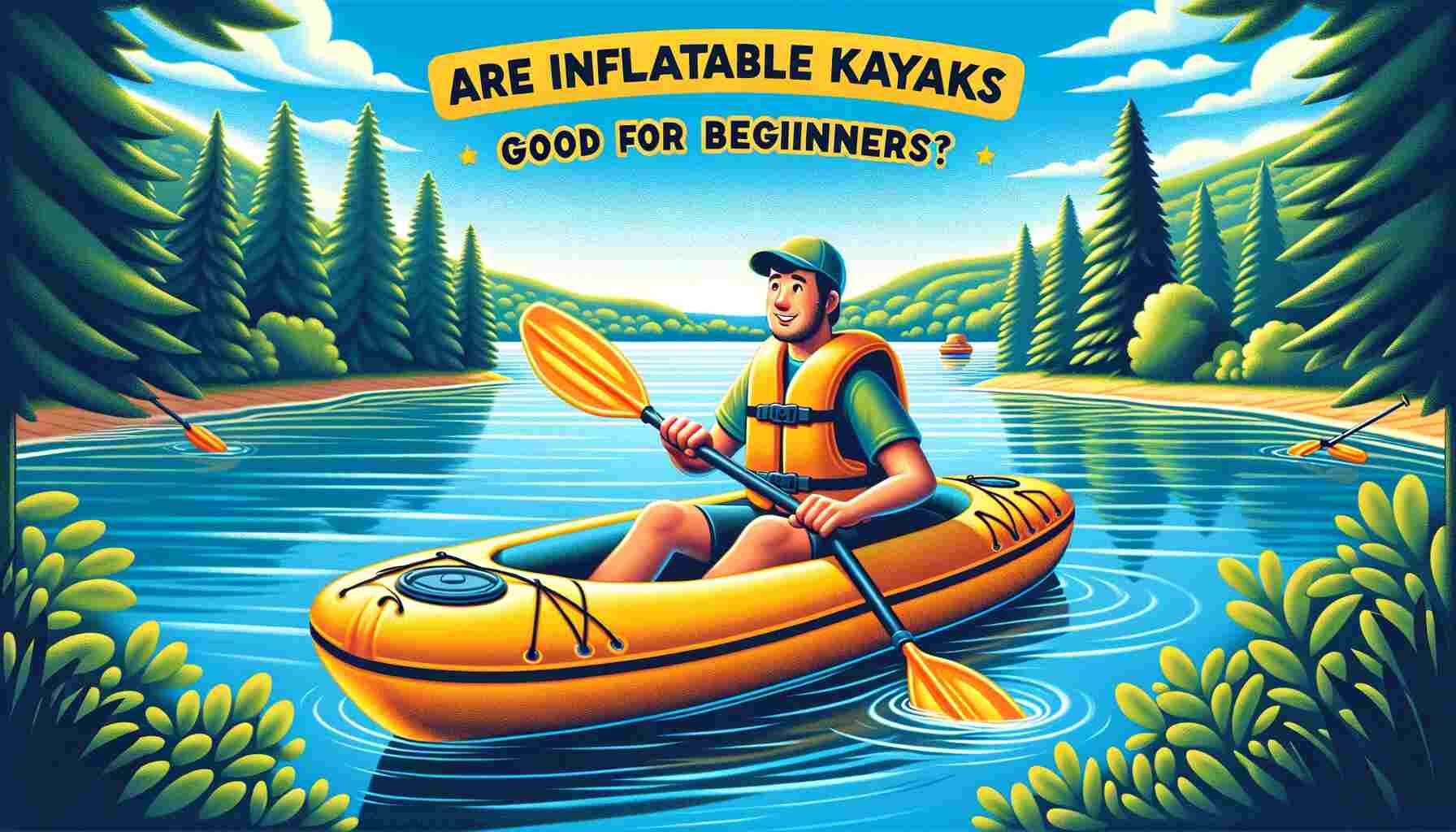Inflatable kayaks offer an excellent entry point for beginners looking to explore the world of kayaking. With their portability, affordability, and versatility, inflatable kayaks provide a convenient and enjoyable paddling experience for enthusiasts of all skill levels.
What are Inflatable Kayaks?
Inflatable kayaks are innovative watercraft made from multi-layered PVC or other durable materials, designed with air chambers that provide buoyancy and stability on the water. These kayaks closely resemble their rigid counterparts in design and performance but offer added benefits such as portability and ease of storage.
Modern inflatable kayaks are capable of handling a wide range of paddling styles, from calm lake excursions to exhilarating whitewater adventures.
Advantages of Inflatable Kayaks for Beginners
- Portability and Storage: Unlike traditional hard-shell kayaks, inflatable kayaks can be easily deflated and folded into a compact size, making them ideal for storage and transportation. Beginners can conveniently carry their kayak to remote waterways without the need for roof racks or trailers.
- Affordability: Inflatable kayaks are generally more affordable than rigid kayaks, making them accessible to beginners on a budget. Additionally, they eliminate the need for additional expenses such as specialized storage equipment, further reducing the overall cost of entry into the sport.
- Durability and Stability: Contrary to common misconceptions, modern inflatable kayaks are constructed from durable materials that can withstand rugged terrain and rough waters. Many models feature multiple air chambers for added stability and safety, ensuring a comfortable paddling experience for beginners.
- Versatility: Inflatable kayaks are versatile watercraft capable of navigating various water conditions, from calm lakes to fast-flowing rivers. Beginners can explore different paddling styles and environments with confidence, knowing that their kayak can adapt to different challenges.
- Ease of Use: Inflatable kayaks are user-friendly and easy to set up, requiring minimal assembly and maintenance. Beginners can quickly inflate their kayak using a hand pump or electric pump and hit the water without the need for specialized skills or equipment.
Addressing Common Concerns
- Puncture Resistance: High-quality inflatable kayaks are designed to withstand punctures and abrasions, but caution should be exercised in rocky or debris-laden waters. Most kayaks come with repair kits for quick and easy fixes in case of minor damage.
- Performance Compared to Rigid Kayaks: While inflatable kayaks may not offer the same speed and agility as rigid kayaks, they excel in stability and maneuverability, making them suitable for beginners. With practice and experience, paddlers can achieve satisfactory performance levels in various conditions.
Types of Inflatable Kayaks
- Light Recreation: Entry-level inflatable kayaks made from single-layer vinyl are suitable for light recreational paddling. While affordable, they may lack durability and performance compared to higher-end models. See the best options.
- Heavy Recreation: Mid-range inflatable kayaks feature single-layer vinyl wrapped in fabric for added durability, making them suitable for more frequent use and moderate whitewater conditions. Here are the must-have options.
- Every Adventure: Premium inflatable kayaks are constructed from thick PVC or advanced drop stitch technology, offering superior durability and performance for experienced paddlers seeking high-end features. See the best of the best options here.
Choosing the Right Inflatable Kayak
Consider factors such as paddling style, budget, and intended use when selecting an inflatable kayak. Beginners may opt for entry-level models to test the waters before investing in more advanced kayaks suited to their specific needs.
Key Features to Look For
- Materials and Construction Technology: Choose kayaks made from durable materials such as PVC or those incorporating drop stitch technology for enhanced rigidity.
- Valves: Ensure reliable valves for efficient inflation and deflation, compatible with standard pump connectors.
- Seat: Look for adjustable and comfortable seats with lumbar support for extended paddling sessions.
- Paddle: Invest in a lightweight paddle with large blades for efficient propulsion through the water.
- Skeg Tracking Fin: Opt for kayaks equipped with a skeg fin for improved tracking and stability, especially in windy conditions.
Storing and Maintaining Your Inflatable Kayak
Store your kayak inflated or deflated, depending on available space and frequency of use. Ensure proper drying and ventilation to prevent mold and deterioration. Regularly inspect and maintain your kayak to prolong its lifespan and performance on the water.
Repairing Minor Damage
Learn how to identify and repair minor punctures or tears using a repair kit included with your kayak. Follow simple steps such as cleaning, applying adhesive patches, and allowing sufficient drying time for effective repairs.
Tips for Using an Inflatable Kayak as a Beginner
Here are 4 important tips for using an inflatable kayak as a beginner:
- Proper Inflation and Deflation: Make sure to properly inflate and deflate your kayak. Overinflating can cause damage to the kayak, and underinflating can make it less stable in the water. Follow the manufacturer’s instructions for inflation and deflation to ensure a safe and enjoyable paddling experience.
- Safety Tips: Always wear a personal flotation device (PFD) and make sure it fits properly. Know your limits and stay within them. Stay aware of weather conditions and water currents before heading out.
- Choosing the Right Location for Kayaking: Choose a location that is suitable for your skill level. Calm and still waters are ideal for beginners. Avoid strong currents or choppy waters until you are more experienced.
- Basic Kayaking Techniques: Learn basic kayaking techniques, such as how to hold a paddle, how to steer the kayak, and how to navigate different water conditions. Practice your skills in calm and shallow waters before venturing out into deeper or more challenging conditions.
Conclusion
In conclusion, yes, inflatable kayaks are a great option for beginners due to their ease of use, affordability, stability, and durability. They are also available in different types, such as recreational, sit-on-top, and touring kayaks, each with unique features and benefits.
However, it is important to follow proper inflation and deflation techniques, and safety tips, choose the right location, and learn basic kayaking techniques to ensure a safe and enjoyable experience. Whether paddling on calm lakes or tackling whitewater rapids, inflatable kayaks offer endless opportunities for adventure and exploration on the water.
Here is another great guide for learning more about inflatable kayaks










